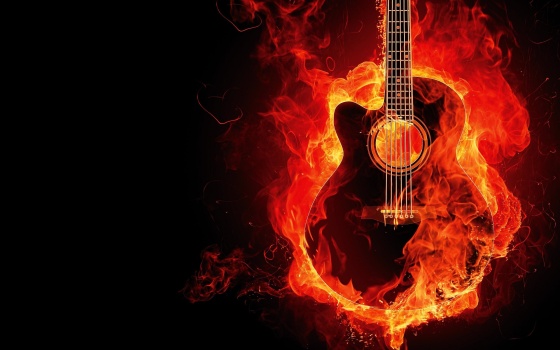
WE DIDN’T START THE FIRE
FROM A TO Z
On September 27, 1989, the iconic song by Billy Joel, We Didn’t Start the Fire hit the airwaves. It was a history lesson set to music. When you first heard the song, did you know or remember all the people places, things and events mentioned in the lyrics? I sure didn’t. Back in 1989 before the internet was something everyone had access to, my boyfriend (now husband) and I headed to the local public library and looked up all the historical references. This month, for the A to Z Challenge, I am writing about that history.
UNITED STATES MARINE CORPS AVIATOR
ENGINEER
ASTRONAUT
UNITED STATES SENATOR
With a flag draping his coffin at Arlington National Cemetery, the first American to orbit the earth was laid to rest this week on April 6, 2017. John Herschel Glenn, Jr. died on December 8, 2016 when he was 95 years-old; however the ceremony in Arlington was scheduled to coincide with what would have been his 74th wedding anniversary to his wife Annie.
In 1962 John Glenn was the first American to orbit the Earth, where he circled it three times. Marked as one of the greatest events in the United States Space Race, Glenn’s Mercury 7 flight in 1962 made him an instant national hero. He became the oldest man in space when he returned aboard the space shuttle Discovery in 1998 at age 77.
Seven things to know about John Glenn (Source: http://www.history.com/news/7-things-you-may-notknow-about-john-glenn-and-friendship-7)
*He was a shining aviation star before the Mercury Program

Colonel John Glenn
Public Domain, https://commons.wikimedia.org/w/index.php?curid=10525827
Glenn had fallen in love with flying at an early age, building model airplanes while growing up in Ohio. In 1941, Glenn discovered a U.S. Department of Commerce program looking for students to train as pilots. Just six months after he received his license, the Japanese bombed Pearl Harbor. Glenn initially enlisted in both the U.S. Army Air Corps and U.S. Navy aviation cadet program, but was eventually assigned to the U.S. Marine Corps. Glenn flew 59 missions in the South Pacific, where one of his wingmen was baseball legend Ted Williams. After serving in the Korean War, Glenn was appointed to a naval test pilot program, where he completed one of the world’s first supersonic transcontinental flights in 1957. Glenn received an enormous amount of publicity following this feat, which brought him to the attention of the NACA, the predecessor to NASA, who selected him to become one of the Mercury 7 astronauts.
*The spaceship name, Friendship 7 was a name given by John Glenn
The official name for Glenn’s mission was Mercury-Atlas 6. “Mercury” for the mission program itself (named after the Roman god of speed), and “Atlas 6” to indicate that this was the 6th mission to use the newer, faster Atlas rocket as a launch vehicle. The astronauts selected for the Mercury program often gave their capsules personal nicknames. Glenn asked his children for suggestions on what he should name the vessel before finally deciding on the word “Friendship” and adding the number “7” to honor his fellow

John Glenn with the Friendship 7 in 1962. He was hailed as a national hero and a symbol of the space age as the first American to orbit Earth. Credit NASA
Mercury members.
*Glenn’s mission was delayed numerous times, leading to concern and anxiety.
Originally scheduled for December 1961 and then pushed to January 13, problems with the new Atlas rocket that would serve as the space capsule’s launching pad caused a two-week delay. On January 27, with television crews already set up to broadcast from both the launch site and Glenn’s home, where his wife, Annie, and his children were anxiously watching, poor weather conditions forced another postponement. When the mission was scrapped, the reporters, accompanied by none other than Vice President Lyndon Johnson, tried to gain access to Glenn’s home in hopes of interviewing his wife. Annie refused to speak to them, and when John heard about the pressure put on his wife, he backed her up, leading to a clash with government officials. The launch was delayed yet again on January 30 after a fuel leak was discovered, followed by yet another weather delay. Finally, with all mechanical issues solved and fair weather forecasted, Glenn was once again strapped into Friendship 7 early on the morning of February 20, 1962.
*Glenn didn’t actually hear the legendary words “Godspeed, John Glenn.”
As mission control performed its final system checks, test conductor Tom O’Malley initiated the launch sequence, adding a personal prayer, “May the good Lord ride all the way,” to which Carpenter, the backup astronaut for the mission, added, “Godspeed, John Glenn.” Carpenter later explained that he had come up with the phrase on the spot, but its did hold significance for most test pilots and astronauts: “In those days, speed was magic…and nobody had gone that fast. If you can get that speed, you’re home-free.” The phrase soon became part of the public consciousness, but Glenn himself didn’t hear Carpenter’s comment until he had returned to Earth. Due to a glitch in Glenn’s radio, Carpenter’s microphone wasn’t on his frequency.

O’Malley (left) with John Glenn and Paul Donnelly in front of Friendship 7
*There were several scary moments aboard Friendship 7.
The launch of Friendship 7 went flawlessly, and Glenn encountered few issues in the early stages of the flight. During his second orbit, mission control noticed a sensor was issuing a warning that Friendship 7’s heat shield and landing bag were not secure, putting the mission, and Glenn in danger. Officials did not immediately inform Glenn of the potential problem, instead asking him to run a series of small tests on the system to see if that resolved the issue, which eventually clued Glenn in to their concerns. After a series of discussions, it was decided that rather than following standard procedures to discard the retrorocket (an engine designed to slow down the capsule upon reentry), Glenn would keep the rocket in place to help secure the heat shield. He successfully reentered the Earth’s atmosphere and splashed down in the Atlantic Ocean after a flight of 4 hours and 55 minutes. When officials inspected the recovered capsule, they determined that the heat shield had never been in danger and a faulty sensor had caused the problem.
*Glenn—and NASA—were mystified by an unusual sighting during the mission.
During the first of Glenn’s three orbits, he reported seeing a series of small particles floating outside his capsule. As he reported to NASA, he had never seen anything like it, and he thought it looked like a series of luminescent stars surrounding him. Glenn referred to the specks as “fireflies,” and tried banging on his capsule walls to see if he could make them move, which he could. Some NASA scientists worried that the sparks were a malfunctioning part of the space capsule or that’s Glenn’s mysterious vision was caused by a medical condition he encountered while in space, while others tried to find a more spiritual meaning to the celestial “fireflies.” So, what were they? The mystery was solved later that year, when Mercury astronaut Scott Carpenter made his orbital flight aboard Aurora 7. Carpenter also reported seeing the particles, and to him they looked like snowflakes. Turns out, Carpenter was pretty close to the truth. They were indeed bits of frozen condensation on the capsule’s exterior that broke off as it moved from through areas of varying temperatures.
*Glenn returned to space, 36 years after Friendship 7.

Group protrait of the crew members of NASA mission STS-95 taken while in space aboard the Space Shuttle Discovery, 1998
John Glenn remained with NASA until 1964, but did not return to space in any of the later Mercury missions. It is believed that President Kennedy and other government officials, well aware of the symbolic importance of the first man to orbit the Earth, ordered NASA to keep him grounded, for fear of his being injured or killed in a space program that was still, in many ways, in the developmental stage. Glenn returned to Ohio, where he became a successful businessman. He later entered politics, and was elected to the U.S. Senate in 1974, serving four terms. Glenn maintained close contacts with NASA, and spoke often of his regret at not having been part of subsequent missions, including the lunar landings. In 1998, however, John Glenn got his wish and returned to space. Though it had been more than 35 years since he had last suited up, Glenn was selected as part of the crew aboard the space shuttle Discovery. His participation, at the age of 77, would allow scientists to study the affects of space travel on the elderly. When Glenn returned from the nine-day mission, he and his fellow crew members were welcomed home with a ticker-tape parade in New York City, marking the second time Glenn had received such an honor.


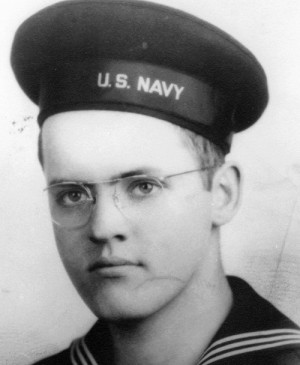 Check out my other blog
Check out my other blog I'M PUBLISHED
I'M PUBLISHED I'm Published Again
I'm Published Again
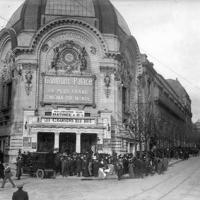
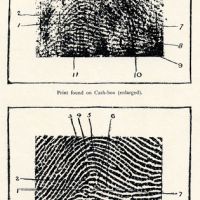
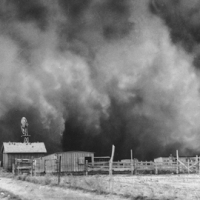
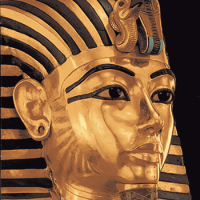
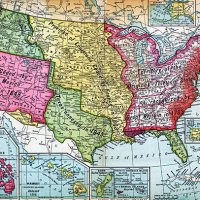
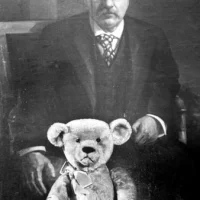
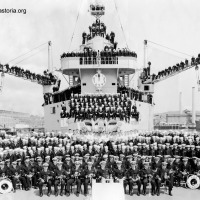
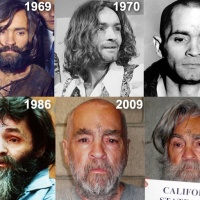
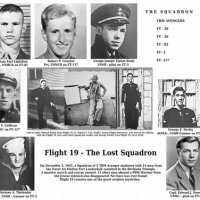
Awesome theme! This is really unique and fascinating! I’m very impressed that you and your husband looked up all the tidbits of this song in the library pre-internet!
Visiting from AtoZ
LikeLiked by 1 person
Important research project 🎶. Thanks for stopping by.
LikeLike
I was really into space program as a kid and John Glenn was one of my favorites. The Right Stuff is still one of my all-time favorite movies.
LikeLike
I love that movie too.
LikeLiked by 1 person
Really interesting. You brought out a few things I knew nothing about, or have forgotten.
LikeLike
Same with me when I looked up what to write about for him. Thanks for reading.
LikeLiked by 1 person
Thanks, Maryann! I’ve recently read his memoirs and was amazed at how he just couldn’t sit still – he had always to be doing something new. As a Senator, what he was doing for the people he represented was vitally important to him – pity so many politicians are only in it for the perks and power.
As an old man, he appeared as himself on an episode of Frasier and turned out to be a delightful comic. (While the series regulars are quarrelling in the other room, he is recording his radio program and sobbing that the Mercury astronauts saw aliens and they weren’t allowed to say so!)
Did anyone see Hidden Figures? The John Glenn in that film was so nice!
LikeLike
I’ll have to see if I can find that Frasier episode on Netflix or Amazon as it sound great. I loved Hidden Figures. During winter break from university, my daughter had a roommate visiting and we all went to see Hidden Figures. All three of us women really liked the John Glenn in the movie 🙂
LikeLike
What an interesting theme! While I have known of John Glenn, I didn’t know much about him. Thanks for the history lesson!
Jessica @ Simply Infatuated
LikeLike
I loved the book The Right Stuff. I knew very little about the space program but that book was fascinating and beautifully written. WeekendsInMaine
LikeLike
Thank you
LikeLiked by 1 person
Thank you for the history lesson, Maryann. John Glenn was an amazing individual.
LikeLike
Yes he was. Thanks for reading.
LikeLike
He was an inspiration and a very humble man. He was on Dancing With The Stars!
LikeLike
Really. I wish past seasons of DWTS were available to stream.
LikeLike